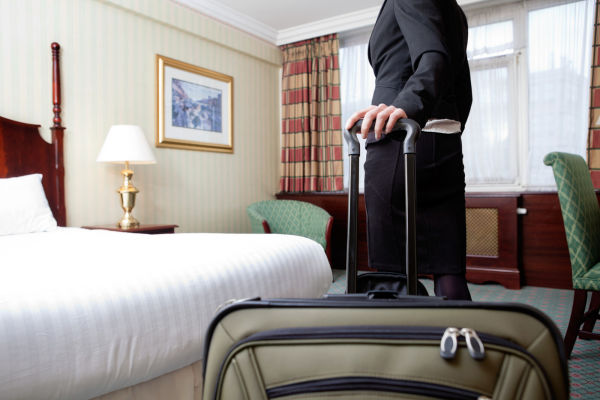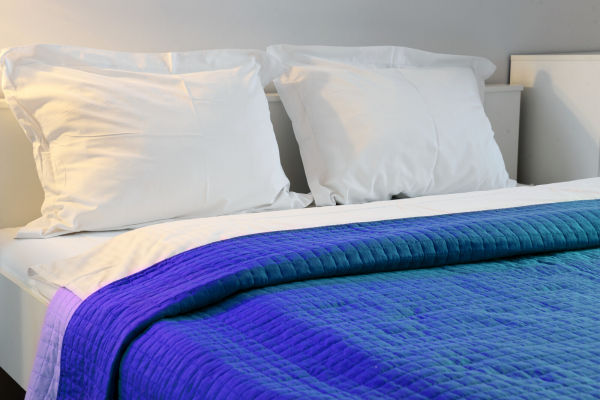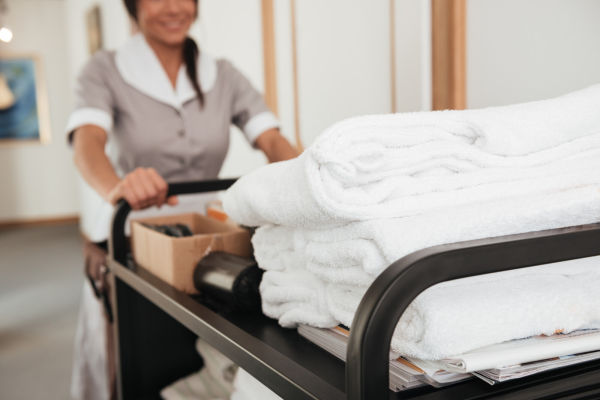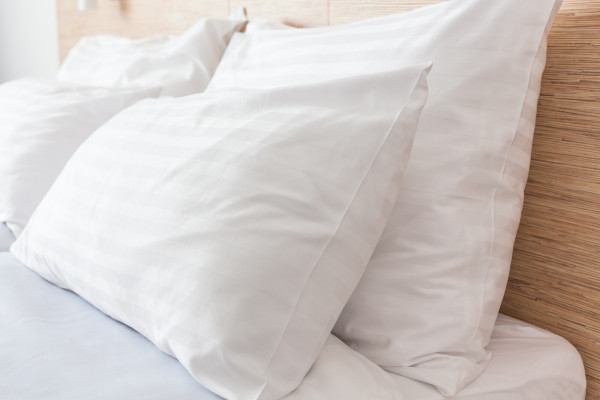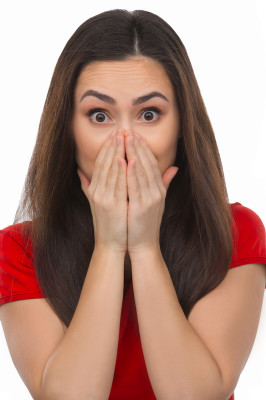Hotel Hygiene Detector
Guest Room Hygiene and Cleanliness Checker

Hotels, Motels, Airbnbs and Holiday-Lets, we all use them and need them. However, with each rented room accommodating potentially hundreds of ‘guests’ each year, we assume; nay hope, they are hygienically cleaned and the bed-linen changed after each occupancy.
How can we really be certain this is being done? None of us actually see how well housekeeping clean our room after we have checked-out! After all,
A room may look clean, but is it hygienically clean?
What you should be looking for
Possible traces from all body fluids…
- Urine
- Saliva
- Sweat
- Vomit
- Feces
- Semen
- Vaginal Fluid
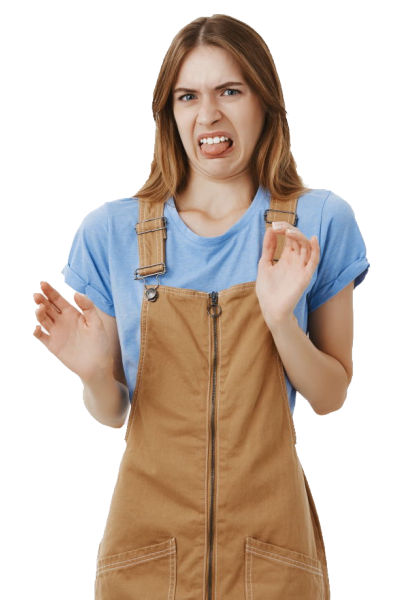
In most cases these will not be visible to you in normal light, however, under UV Forensic light of the Hotel Hygiene Detector, they will all be revealed!
Shared-use, hotel mattresses can be an ideal home for parasites such as Bedbugs and dust mites. Even transient hitch-hikers such as Head-lice, after their host has checked-out, can remain alive and be present in unchanged, dirty bed linen ready for their next meal!
Yes, it does sound disgusting…
But thankfully you no longer have tolerate unclean, unhygienic Hotel rooms. Armed with your own Hotel Hygiene Detector, the hidden truth of Hotel Room Hygiene will be revealed!
One of the key reasons why the Hygiene Detector Pro is so good at what it does, is the superior quality Korean made UV LEDs we use, together with our unique UV PRO Filter which removes 99% of visible interference light, so you only see the glow from the substance or surface material to the invisible UV light emitted.
This killer combination produces consistent professional results at an affordable price.
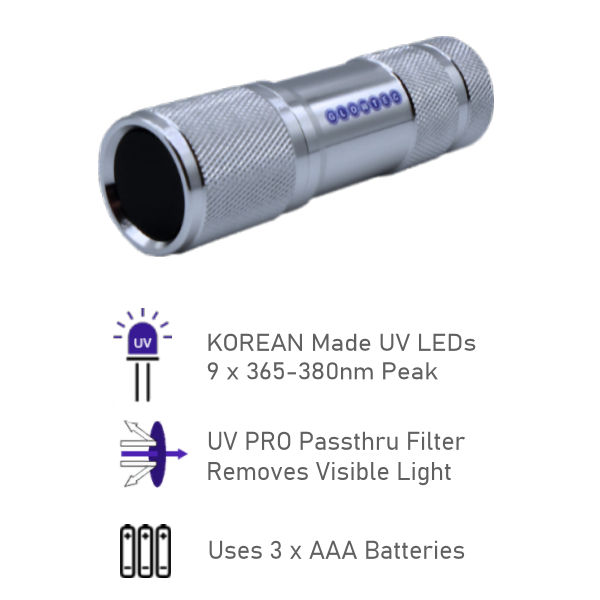
Check out these ‘Inside Edition’ Hotel Housekeeping Exposés
How do you Check the Hygiene Cleanliness of a Hotel Room?
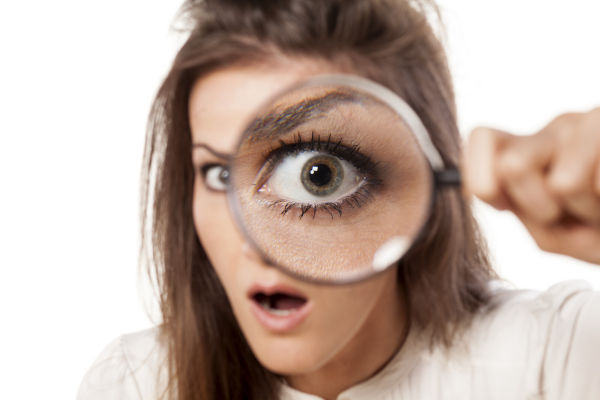
In fairness to those Hotels, Motels and Airbnbs who are conscientious in maintaining hygiene cleanliness in their rooms. However, there are many who do not, or have staff who will take short cuts with cleaning and hygiene to make their work load easier. Its human nature to disregard what we cannot see. There in lies the problem.
When inspecting the hygiene and cleanliness of a Hotel room, you will be mostly looking for traces of body fluids. Under UV light, each of these substances has a natural, low-level fluorescent glow (so do not expect a supernova!) The brightness of the fluoresce will vary depending on the substance, its age and amount. Therefore you should only perform the inspection in darkness and you may need to be close to some stains in order to see them.
Hotel Room Hygiene can be split into three areas:
1. Room Hygiene
Moving round the room we find a host of frequently touched items and surfaces, eg:
Drinking glasses, light-switches, TV remote, door handles, toilet flush, taps, guest book, menu, telephone, mini-bar and room key card etc.
Each of these items or surfaces ‘should’ really have been hygienically cleaned after each occupancy. The likelihood is some if not all may not have been.
Do the finger-wipe test for signs of dust or dirt and you will know for sure if it has not been cleaned if you touch an item or surface which feels sticky or tacky! Under the UV light from your Hotel Hygiene Detector the surface dirt will show up clearly as glowing specs of dust and fibres and will indicate which surfaces have been housecleaned or at least ‘dusted’.
The Hotel Hygiene Detector will help reveal the room’s true state of cleanliness and reveal traces of body fluids remaining on most surfaces. Check the floor and carpets too for signs of permanent staining, along with the walls, bedframe and the sides of furniture.
Hotels are unlikely to deep-clean the carpets, walls, bed-frame or furniture on a regular basis.
Pro Tip: UV light needs darkness to deliver the best results. Turn off the lights and close the curtains before conducting your UV examination.
Pro Tip: Bring your own anti-bacterial / disinfecting wipes with you to clean these items yourself.
Pro tip: Bring bottled water and do not use the drinking glasses provided.
2. Bed Hygiene
The assumption we all make, is that all bed-linen; top and bottom sheets and all pillow cases, are replaced with clean laundry after each occupant. How do we know this is so?
There have been many high profile exposé reports highlighting profound Hotel housekeeping failures (see video examples). Cost saving is a irresistible force for any business. Hotels are no different. Shortcuts in laundry and housekeeping services will be inevitable.
For housekeeping staff this probably translates to… If it looks clean, leave it. Re-tuck the sheets and fluff and turn over the pillows! Next room…
If we suspect the linen has not been changed, then the Hotel Hygiene Detector will help you check the linen for signs of ‘recent use’ and the possible presence of body fluids remaining on the material! But that is just on the surface!
The mattress will have been slept on by potentially several hundred ‘strangers’ with who knows what standards of personal hygiene or undeclared skin conditions!
Pillow cases are the one potentially dirty (ie: as used by the previous occupant) surface to actually have a prolonged, intimate contact with your face, mouth, eyes and ears! The possibility of direct contact with head lice or someone else’s body fluids is reason enough to bring along your own clean pillow cases.
Along with any visible and UV-visible staining or contamination of the mattress, the presence of live Bed bugs is a real possibility. Bed bugs are not known to spread disease, but their bites can be itchy and uncomfortable.
Bed bugs are known to be hitchhikers and can be transported from one location to another on clothing, luggage, and other personal belongings.
They are small, flat, and reddish-brown insects that feed on the blood of humans and can hide in cracks and crevices found in mattresses, bed frames, and headboards. However, bed bugs can also be found in other areas such as carpets, curtains, and furniture.
Check mattress seams and headboard and surrounding areas with your Hygiene Detective Pro and it will help you determine the hygienic state of the mattress. If you do find evidence of Budbugs, you should notify the Hotel immediately and change room.
Note: When using your Hotel Hygiene Detector (UV Forensic Torch) on white bed sheets, white pillow cases or white towels, you will see they react strongly to the UV light shining a bright blue, this is due to a chemical present in white cotton to improve its whiteness.
The downside to this is that it may prove harder to distinguish Body fluid stains on these white fabrics. A body fluid stain which has a weaker glow would appear as a slightly darker area on white fabric under UV light.
Pro Tip: If there happens to spare linen in the room, change the pillow case(s) and sheets or ask housekeeping for clean bed linen.
Better Tip: Why risk it. Bring you own clean pillow cases to use. Use distinctive patterned or coloured cases so you are less likely to leave them behind when you check out!
Pro Tip: UV light needs darkness to deliver the best results. Turn off the lights and close the curtains before conducting your UV inspection.
3. Bathroom Hygiene
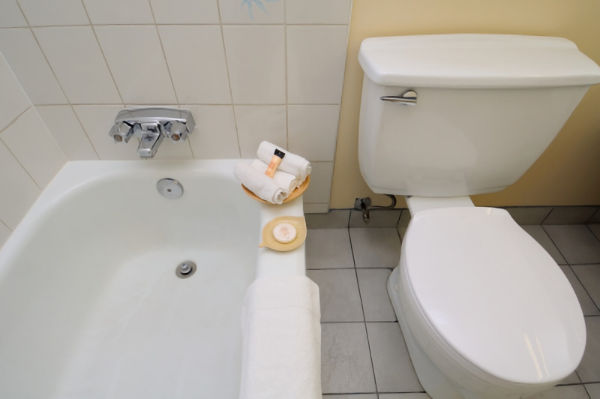
Despite bathroom furniture being specifically made to be easy to clean and maintain, hotel bathrooms are a hot spot for germs and bacteria! The most obvious, personal hygiene risk is the loo seat. This is the one shared-contact surface which will make actual, intimate contact with your body!
Use your Hotel Hygiene Detector to reveal the true state of hygiene in your bathroom. Check down the sides and behind the W.C. Look into corners and those hard-to-reach places where housekeepers may just skip if they ‘look’ clean enough. Also look for signs of mold as this can be a strong indicator of lapse hygiene standards.
Pro Tip: Be sure to use your own Anti-Bacteria surface wipes to clean the loo seat and flush button.
Pro Tip: UV light needs darkness to deliver the best results. Turn off the lights and close the curtains before conducting your UV inspection.
Note: When using UV light to detect body fluids, it is important to be aware of the limitations of this method. UV light can only detect certain types of body fluids, and it can be difficult to identify the specific type of fluid based on its fluorescence. Additionally, UV light can be affected by other factors, such as the presence of certain chemicals or the type of surface the fluid is on.
Pro Tip: Before booking your Hotel or Airbnb, take a few minutes to check out their reviews on travelers guides such as Trip Advisor etc. Whilst individual reviews cannot be trusted, you can get a ‘feel’ for the standard of accommodation and service they offer.
Not all Hotels are the same.
It’s important to note that not all hotels are the same, and many do take great care to maintain high standards of hygiene and cleanliness. However, it’s always a good idea to take basic precautions when staying in a Hotel or Airbnb, such as bringing your own pillows or pillow cases, using disinfectant wipes on surfaces, and washing your hands frequently.
It’s important to note that not all biological fluids are visible under UV blacklight, and may be confused with other everyday chemicals and substances that may also appear fluorescent under UV light. Additionally, the visibility of residual body fluids can be affected by factors such the type and colour of the surface, the age of the stain and the presence of other substances.
More on this general subject below…
Readers Digest Conclusions on Hotel Hygiene and the risk to guests:
The 12 Dirtiest Spots in Every Hotel Room
14 Gross Things Hotels Are Still Doing to Save Money
UV Blacklight in a Nutshell
There is so much mis-information online about UV light (Blacklight) we’ll clear up a few main points here…
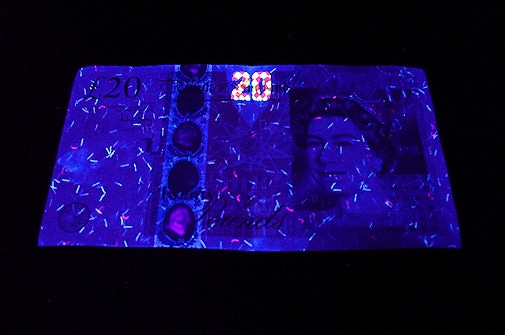
No. Absolutely not. UV is invisible to the human eye so ideally you should see nothing! What you do see is visible ‘interference’ light (known as spill) which is a bi-product of poor quality inferior UV LEDs. This bright, purple glare is not UV and only serves to illuminate the search area, actually making it harder to see the fluoresce you are looking for!
The rule of thumb is: The brighter it is, the worse it is!
This is why our UV PRO Forensic Torch (a.k.a Stain Detective Pro) is fitted with a special UV PRO filter which removes 99% of unwanted visible light and only lets the invisible UV light through. This produces stunning, professional results across the board.
Again. Absolutely not. The greater the number of inferior (cheap) LEDs the torch has, the more visible interference light it produces and the worse the end result.
Tip: Avoid any UV Torch with more than 9 LEDS.
Yes. The frequency of UV light emitted determines the quality of results obtained. There is a sweet-spot for UV which is between 365nm and 385nm. However, to manufacture LEDs capable of emitting in this frequency range is far more expensive.
The cheap UV torches sold on eBay and Amazon, will use inferior-quality Chinese made LEDs emitting in the range of 390 – 410nm. At this range the UV light is a very poor quality and the visible light output is at its highest!
(see here for more about UV Blacklight).
GLOWTEC UV PRO Forensic Torches are made using high quality KOREAN made UV LEDs which peak at 380nm and a low visible light output. This provides the best balance of quality, performance and price, and offers so excellent value for money.
See our short comparison video –> https://hand-hygiene.com/videos/
That really depends on what it is your are looking at / looking for!
Unlike man-made fluorescent materials such as white fabric, white paper and UV paint which fluoresce brightly under UV blacklight, natural fluorescent substances, such as urine and body fluids etc, whilst they do glow (fluoresce) under UV, they do NOT fluoresce brightly. In fact they are generally quite dim, so do not expect a supernova! You will be looking for areas slightly brighter than their background; you’ll know them when you see them.
There are many factors which determine how bright a stain will be (or not be). In fact too many to mention all of them. In short; old stains are generally dimmer than recent ones. Different types of stains can glow in different colours and varying degrees of intensity.
Despite the common misconception. Human blood does NOT glow / fluoresce under UV light. In fact it does the opposite; it absorbs UV light. It would therefore have a very dark appearance under UV light.
See ‘Delivery’ for our dispatch days, shipping costs and options. Prices exclude VAT.


